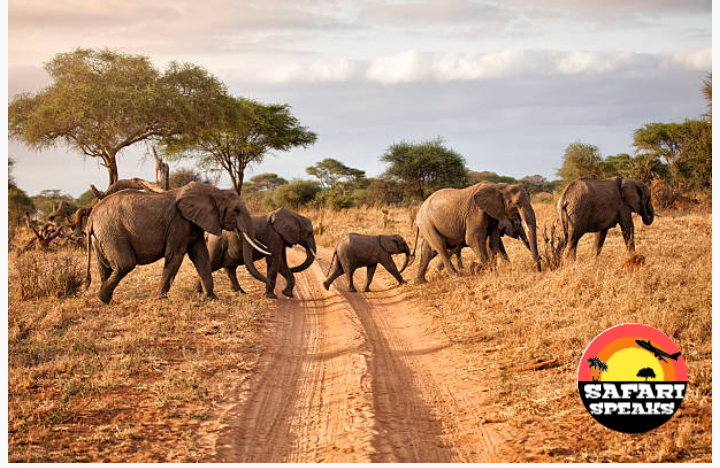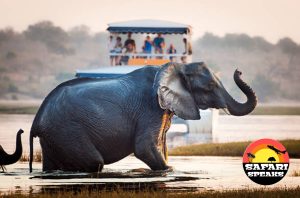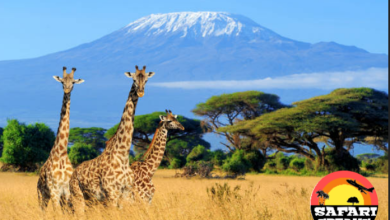Call of The Wild: Best Safari Trip Guide for First Timers

Best safari trip guide for first timers blog post is one that gives a glossary of the safari wild for most tourists who are planning to embark on a trip to a safari destination.
Once in the safari, you will notice that when you ask people what animal they saw on their fame drive, they might reply, “Elephant, lion, leopard and orxy,” when in fact they saw several members of each species.
This use of the singular form when more than one of that species says crocs for crocodile. This form of safariese will be used throughout this guide to help separate you from the amateur.
Nine Best Safari Trip Guide for First Timers
1. Obtain detailed maps of the countries you intend to visit. This will not only increase your awareness of the geography before and during your safari, but will better enable you to relate the story of your safari to family and friends upon your return.
2. It is often better to sit quietly as few water holes than to rush around in a n attempt to visit as many locations as possible. Don’t just look for large game; there is an abundance of reptiles, amphibians, smaller animals, birds and insects that are often fascinating to observe. Do not disturb the animals. Remember, we are also guests in this world.

3. Put your valuables in a safety deposit box at your lodge or hotel. Do not call out to a person, signaling with an index finger. This is insulting to most Africans. Instead, use four fingers with your palms facing downward.
4. Wear colors that blend in with your surroundings (brown, tan, light green or khaki). Do not wear perfume or cologne while game viewing. Wildlife can detect unnatural smells for miles and unnatural colors for hundreds of yards, making close approaches difficult.
5. The very few tourists who get hurt on safari are almost those travelers who ignore the laws of nature and most probably the advice and warnings of their guides. Common sense is also the rule.
6. Do not wade or swim in rivers, lakes or streams unless you know for certain that they are free of crocodiles, hippos, and bilharzia (a disease). Fast-moving areas of rivers are often safe, but are still risky.
Also, do not walk along the banks of rivers near dawn, dusk or at night. Those that do so may inadvertently cut off a hippo’s path to its water hole, and the hippos may charge. Hippos are responsible for human death in Africa than any other game animal, most often from this type of occurrence.
7. Wear close-toed shoes or boots at night and also during the day if venturing out into the bush. Bring a flashlight and always have it with you at night.
8. Do not venture out of your lodge or camp without your tour or safari guide, especially at night, dawn, or dusk. Remember that wildlife is not confined in the park unlike the zoo where they are kept in their respective cages.
9. Resist the temptation to jog in national parks, reserves or other areas where wildlife exists. To lions and other carnivorous animals, we are just “meat of the hoof” like any other animals – only much slower and less capable of defending ourselves.
What to Wear – What to Take
One of the best safari trip guide to consider are countries close to the equator (Burundi, Kenya, Rwanda, Tanzania, Uganda and Zaire) have small differences in seasonal temperatures, with June – August being the coolest time of the year; the main factor affecting temperature is altitude.

Countries in southern Africa (Lesotho, Namibia, South Africa, Swaziland, Zambia and Zimbabwe) have more pronounced seasons, often cold (sometimes freezing) in winter (June – August) and hot in summer (October – February).
Casual clothing is usually worn by day. Dresses for ladies and coats and ties for men are only required in top restaurants in Kenya, South Africa, Zimbabwe, and at the top of the Mount Kenya Safari club (Kenya). In some restaurants, gentleman’s coats are available on request.
Bring in some camera and charger to recharge once the battery life of the camera goes low, binoculars, sun blocks, electric converter and adapter, a copy of a Travel Journal, alarm clock, insect repellent, brown khaki or light green cotton clothing including at least two pairs of long pants and two long sleeve shirts, flashlight and extra batteries or a rechargeable flashlight.
A wide – brimmed hat, rain gear, good walking shoes, two prescription glasses (one for contact lens wearers) and a copy of the prescription, prescription drugs with a letter from your doctor verifying your need, medical summary from your doctor if medical problems exists, band aids (plasters), motion – sickness tablets, medicine for traveler’s diarrhea, anti – malarial prophylaxis, decongestant tablets, laxatives, headache tablets, throat lozenges, antacid and antibiotic ointment.
Best Safari Trip Guide: Best time to go
The When is the best time to go question is one that most people will always ask before embarking on any safari trip. When tourists refuse to make researches to know when the best time to go for any trip, they end up returning with lot of disappointments because their expectations were cut short. Imagine going for a safari trip with high hopes of seeing a leopard when they must have migrated to another habitat in search of food or shelter, the tourist may end up putting up a sad face.
Timing can make a world of difference. For example, Hwange National Park in Zimbabwe is well known for its population of over 25,00 elephants. I once spent Christmas there (during the rainy season) and I never saw any elephant coming. But during the dry season they were everywhere.
In most cases, the best game viewing, as ever experienced is during the dry season. Wildlife concentrates around water holes and rivers, and vegetation is less dense than in the wet season, making game easier to find. There are however exceptions. For instance, the Serengeti migration often begins at the height of the rains in Tanzania.
During the rainy season, the land is often luxuriously green, the air is clear. People interested in scenery or with dust allergies may wish to plan their visits shortly after the rains are predicted to have started or soon after the rains are predicted to have stopped. Game is more difficult to find, but there are usually fewer travelers in the parks and reserves.
Most reserves in Africa are simply heaven for bird watching (usually November –March) are often the opposite of the best time for big game viewing. Bird watching, however, is good year-round in many regions.
Generally speaking, game viewing is best in Kenya and Tanzania mid-December – March and July – September, while the best game viewing in Zimbabwe, Zambia, Botswana and South Africa is June – October.




